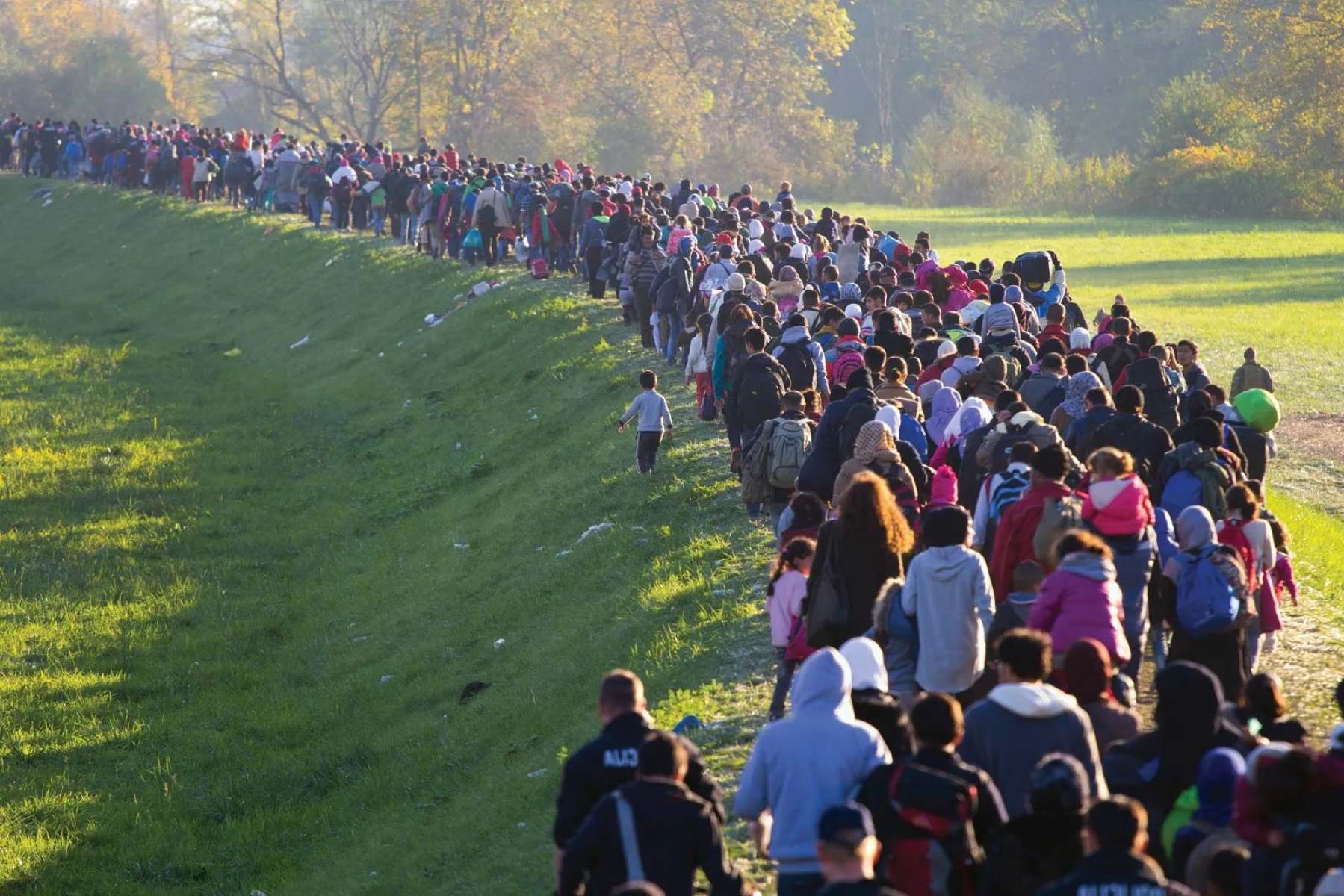
Population migration is a fascinating phenomenon that shapes our world in countless ways. People move for various reasons, including better job opportunities, escaping conflict, or seeking a higher quality of life. Did you know that over 272 million people live outside their birth country? That's about 3.5% of the global population! Migration impacts economies, cultures, and even politics. For instance, remittances sent by migrants to their home countries totaled over $689 billion in 2018. This movement of people also leads to diverse, multicultural societies, enriching our lives with new traditions, languages, and foods. Curious about more intriguing facts? Let's dive into 38 surprising truths about population migration!
What is Population Migration?
Population migration involves people moving from one place to another. This movement can be within a country or across international borders. Let's dive into some fascinating facts about this phenomenon.
-
Migration has been happening for thousands of years. Early humans migrated out of Africa around 60,000 years ago.
-
There are different types of migration. These include internal migration (within a country) and international migration (between countries).
-
Economic reasons are a major driver. People often move to find better job opportunities or improve their living standards.
-
Wars and conflicts force people to migrate. Refugees flee their home countries to escape violence and persecution.
-
Climate change is a growing cause. Rising sea levels, extreme weather, and droughts push people to seek safer environments.
Historical Migration Patterns
Throughout history, large groups of people have moved for various reasons. These migrations have shaped cultures, economies, and societies.
-
The Great Migration in the U.S. Between 1916 and 1970, about 6 million African Americans moved from the rural South to urban areas in the North.
-
The Irish Potato Famine. In the mid-1800s, a potato blight led to mass starvation in Ireland, causing over a million people to emigrate.
-
The Jewish Diaspora. Over centuries, Jewish communities have been displaced multiple times, leading to widespread global migration.
-
The Partition of India. In 1947, the division of British India into India and Pakistan caused one of the largest mass migrations in history.
-
The Transatlantic Slave Trade. Millions of Africans were forcibly taken to the Americas between the 16th and 19th centuries.
Modern-Day Migration Trends
Today's migration trends are influenced by globalization, technology, and changing political landscapes.
-
Urbanization is on the rise. More people are moving from rural areas to cities for better opportunities.
-
The European migrant crisis. Since 2015, millions have fled conflicts in the Middle East and Africa, seeking asylum in Europe.
-
The U.S.-Mexico border. Many Central Americans migrate to the U.S. to escape violence and poverty.
-
Brain drain. Skilled professionals from developing countries often move to developed nations for better career prospects.
-
Digital nomads. With remote work becoming more common, some people migrate temporarily to different countries while working online.
Impact on Societies
Migration can have profound effects on both the origin and destination locations.
-
Cultural diversity. Migrants bring their traditions, languages, and cuisines, enriching the cultural fabric of their new homes.
-
Economic contributions. Migrants often fill labor shortages and contribute to economic growth.
-
Remittances. Migrants send money back to their home countries, supporting families and boosting local economies.
-
Social tensions. Influxes of migrants can sometimes lead to xenophobia and social conflict.
-
Population decline. Regions losing large numbers of people may face economic and social challenges.
Challenges Faced by Migrants
Migrants often encounter numerous obstacles during their journeys and in their new environments.
-
Legal barriers. Navigating immigration laws and obtaining visas can be complex and costly.
-
Language barriers. Learning a new language is often essential for integration but can be difficult.
-
Discrimination. Migrants may face prejudice and unequal treatment in their new countries.
-
Employment challenges. Finding jobs that match their skills and qualifications can be tough.
-
Access to services. Migrants might struggle to access healthcare, education, and other essential services.
Interesting Migration Facts
Here are some intriguing tidbits about migration that might surprise you.
-
Birds migrate too. Many bird species travel thousands of miles between breeding and wintering grounds.
-
The longest migration. The Arctic Tern flies from the Arctic to the Antarctic and back each year, covering about 44,000 miles.
-
Nomadic tribes. Some human groups, like the Bedouins, have traditionally lived a nomadic lifestyle, moving with the seasons.
-
Seasonal migration. In some countries, people move temporarily for seasonal work, such as harvesting crops.
-
Virtual migration. With the rise of the internet, some people "migrate" virtually by working for companies in different countries without physically moving.
Future of Migration
As the world changes, so will migration patterns. Here are some predictions for the future.
-
Increased climate migration. More people will likely move due to environmental changes and natural disasters.
-
Technological advancements. Improved transportation and communication will make migration easier.
-
Policy changes. Governments may adopt more flexible immigration policies to address labor shortages.
-
Aging populations. Countries with aging populations might encourage younger migrants to support their economies.
-
Global interconnectedness. As the world becomes more connected, migration will continue to shape societies.
Fun Facts About Migration
Let's end with some fun and quirky facts about migration.
-
Animal migrations. Besides birds, animals like whales, butterflies, and caribou also migrate long distances.
-
The Great Wildebeest Migration. Each year, over a million wildebeest move across the Serengeti in search of fresh grazing grounds.
-
Historical explorers. Famous explorers like Christopher Columbus and Marco Polo were essentially migrants, traveling vast distances to discover new lands.
Migration's Impact on Our World
Population migration shapes societies, economies, and cultures. People move for various reasons like better job opportunities, escaping conflict, or seeking a higher quality of life. This movement brings diversity, innovation, and growth to new areas but can also strain resources and infrastructure.
Understanding migration patterns helps policymakers create better strategies for integration and support. It also fosters empathy and awareness among communities, promoting inclusivity and cooperation.
Migration isn't just about numbers; it's about human stories and experiences. Each journey reflects resilience, hope, and the pursuit of a better future. By recognizing the complexities of migration, we can build more compassionate and adaptable societies.
So next time you hear about migration, remember it's more than just a statistic. It's a powerful force shaping our world, one person at a time.
Was this page helpful?
Our commitment to delivering trustworthy and engaging content is at the heart of what we do. Each fact on our site is contributed by real users like you, bringing a wealth of diverse insights and information. To ensure the highest standards of accuracy and reliability, our dedicated editors meticulously review each submission. This process guarantees that the facts we share are not only fascinating but also credible. Trust in our commitment to quality and authenticity as you explore and learn with us.


